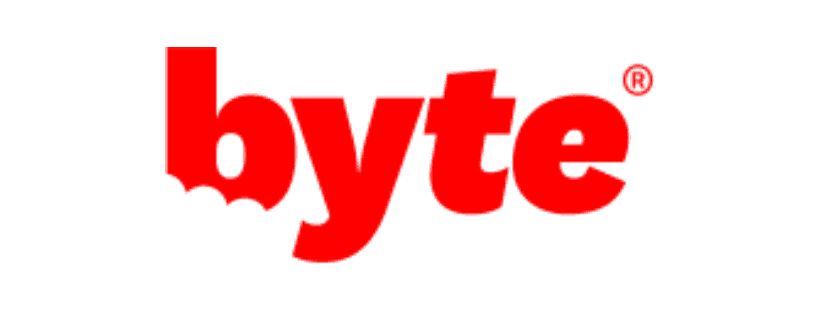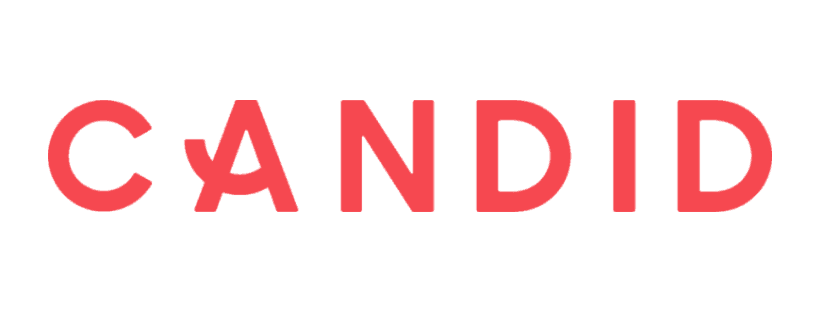
Invisalign has long been the country’s go-to clear aligner treatment. From New York to California, they’ve crafted dazzling smiles and renewed confidence for over twenty years. And while Invisalign delivers consistent coast-to-coast results, their prices can vary based on where you live. Why? That’s a good question.
A number of factors can sway Invisalign costs, depending on your home state. Boasting a cost of living that’s among the nation’s lowest, along with below-average taxes, Alabama’s Invisalign prices are often pretty reasonable. On average, you can expect to pay between $3,000 and $6,000 for Invisalign treatment in Alabama. But where you fall in that range depends on several factors.
So, if you’re trying to plot out a budget, but don’t have a good Invisalign estimate, we’re here for you. By the end of this guide, you’ll have a better idea of what you can expect to pay for Invisalign in Alabama.
| Area | Cost in Alabama | National Average |
|---|---|---|
| Urban | $3,500–$5,500 | $5,750 |
| Suburban | $4,000–$6,000 | $6,000 |
| Rural | $3,000–$5,000 | $5,500 |
These ranges are estimates based on what we know about Invisalign costs and some information from a few Alabama-based orthodontists. But they should give you a general sense of what you might pay.
Table of Contents
Why Is Invisalign So Expensive?
We won’t lie: Invisalign is pricey no matter where you live. But there are good reasons for this, and many people think it’s worth the expense.
Every part of your treatment will go through your dentist or orthodontist, which gives them the chance to make on-the-fly adjustments, implementing additional attachments and altering timelines where they see fit. This is the most drastic difference between Invisalign and at-home aligner services like Byte and SmileDirectClub. And it enables your orthodontist to treat a wide variety of severe conditions, even jaw misalignments like overbite and underbite.
The average Invisalign treatment time is 12–18 months and requires office visits around every six weeks. But your dentist or orthodontist’s time, facilities, and equipment aren’t free, which means Invisalign often costs substantially more than at-home alternatives.
Looking For Affordable Orthodontic Treatment in Alabama?
Invisalign is a great product, but the price tag can be difficult to swallow. If you're looking to straighten your teeth without breaking the bank, there are more affordable options out there.
Home-based clear aligner brands like SmileDirectClub and Byte sell similar products for a fraction of the cost of Invisalign. We've researched and reviewed these services to help you find the best solution for your smile (& your budget).
What Factors Influence Invisalign Costs?
No matter where you are, Invisalign can be expensive. But just how expensive depends on numerous factors. Some apply to every state while others are based on where you live, but you can find all of them in detail below.
Condition Severity
This is the most significant price-determining factor. A minor case of crowding or spacing simply takes less time and aligners to correct than a severe case of crossbite. The fewer office visits and aligners your teeth require, the less you’ll pay. During your initial consultation, your dentist/orthodontist can evaluate your teeth and estimate how long your treatment might take.
Region
In general, orthodontic care costs more on the coasts and less in the middle of the country. The northeast is particularly expensive, while southern states like Alabama and Mississippi boast some of the nation’s lowest costs. Taxes can also play a role. The state will add sales tax to your total Invisalign cost, and higher corporate taxes might cause your orthodontist to accommodate by raising prices.
One recent study ranked Alabama as one of the top five states for dental care affordability. So, on average, Invisalign costs in Alabama will be lower than most other places. So, no matter where you’re located within the state, you can expect more affordable Invisalign prices than a majority of other regions.
If you live near Alabama’s eastern border, you can even cross over into Mississippi — which has the nation’s lowest average cost of living — in search of lower prices. Or, to the west, Atlanta has a ton of dentists and orthodontists, so you might find one that better suits your needs.
Alabama doesn’t gouge individuals or businesses on taxes, but they’re still a factor. The statewide tax rate is 4% (which is slightly lower than average), but a maximum local sales tax of 7.5%. And their corporate income tax rate is 6.5%, which is comparable to many other states. Higher business taxes can end up driving up consumer orthodontic costs, but with Alabama’s middle-of-the-road corporate taxes, you likely won’t see a noticeable effect on your payments.
Urban, Suburban, or Rural?
Not only are Invisalign prices different between states, but they also vary depending on your location within the state. Urban areas, for example, often have a higher cost of living, and it’s less expensive to live in a small town. Do you have high rent and utility payments? Then your dentist or orthodontist likely does too. Higher overhead costs usually result in more expensive orthodontic treatment.
Urban
Huntsville, Birmingham, Montgomery, and Mobile are Alabama’s four largest cities, and they’re surprisingly affordable compared to the rest of the state, well below the national cost-of-living average. They don’t have a ton of Invisalign providers nearby, but they each have enough to shop around, so you can find one with costs that fit your budget. As a bonus, the University of Alabama at Birmingham houses the state’s only dental and orthodontic school, where you can receive discounted treatment from a qualified student or resident.
Suburban
Alabama’s suburbs and mid-sized towns offer a similar number of orthodontic options, but treatment can come at a higher price. Some of the state’s most expensive places to live — like Trussville, Mountain Brook, Vestavia Hills, and Gulf Shores — are mid-sized towns. If you live in the suburbs of a city, along the gulf, or in one of Alabama’s two largest college towns (Tuscaloosa and Auburn), you can expect a slightly higher cost of living, which can lead to higher prices for dental and orthodontic care. However, these towns are typically within driving distance of large cities or rural areas, so you can venture out to find lower prices.
Rural
If you’re part of the nearly 44% of Alabama’s population that lives in a rural area, you likely have a much lower cost of living, especially when it comes to housing. This means that your local dentist or orthodontist probably won’t pay a fortune for their office space, and they might pass these savings on to you. On the flip side, you might only have one or two dentist/orthodontist options nearby, so you won’t be able to compare prices like you could in a city or suburb.
Local Competition
When you have numerous dentists and orthodontists in an area, they each need to find ways to stay ahead of the competition and attract new customers. Many times, this means lower prices and special offers or sales. So, if there’s a high concentration of Invisalign providers in your area, it can mean lower prices, giving you the ability to “shop around.”
In populous areas like Birmingham, Montgomery, and Mobile, you’ll find plenty of options, so each Invisalign provider might be prone to set themselves apart by offering discounts and promotions. They’re technically mid-sized towns, but Tuscaloosa and Auburn also have handfuls of Invisalign providers due to their booming college populations. And if you live in a suburb, you likely have nearby options, plus you’re close enough to drive into a city.
Rural areas, however, offer much fewer options. Some don’t have any dentists or orthodontists, so residents need to commute to the nearest large town. Because they have less competition, these rural Invisalign providers can sometimes maintain higher prices. Not to mention the money you’ll spend in gas driving to routine appointments.
Dentist or Orthodontist Experience
A seasoned dental professional with an impressive portfolio of Invisalign successes will often charge more than a novice who just started offering clear aligner treatment. So, in some cases, you may need to decide between experience and affordability (but not always!). Sometimes it can be helpful to “shop around” to weigh your options if you have multiple dentists and orthodontists nearby.
Invisalign has a tiered series of levels (ranging from bronze to platinum) that tell you how much experience a given provider has. When you search for providers through Invisalign’s website, they will show you the level of each dentist and orthodontist in your area.
Managing Treatment Costs
When you’re staring down thousands of dollars in orthodontic treatment, it can be intimidating. Fortunately, there are effective ways to lower and manage those costs, from promotional discounts to payment plans. Here’s what you can do:
Review Your Insurance Plan
Some insurance plans will include Invisalign treatment and others don’t. If your plan includes orthodontic benefits, there’s a good chance you might receive partial coverage. But you don’t want to begin treatment expecting help from your insurance provider, only to find out that it’s not coming. So don’t commit to an Invisalign plan without first reviewing your insurance plan and contacting your provider to see if you’ll receive coverage.
You can also pay for Invisalign directly from an FSA or HSA if you have one. Consult your dentist or orthodontist to see how they handle these payments.
Search for Sales and Discounts
Unfortunately, you won't see sales plastered across Invisalign’s homepage and you won’t receive floods of promotional emails advertising “$100 off!” or “20% discount!” Invisalign doesn’t do that. However, your specific dentist or orthodontist might. Give their office a call to see if they have any special Invisalign offers. Sometimes, dentist offices will post these discounts on Groupon. Just head over to Groupon.com and search for Invisalign deals in your area.
Universities with dental schools will also offer discounts if you don’t mind a student or resident administering your Invisalign treatment. These individuals are qualified and overseen by professors and experienced dental professionals, so you can be sure you’re receiving quality care.
In Alabama, your only option is the University of Alabama at Birmingham, so if you’re in the area, give it some consideration!
Ask About Financing
Most people can’t pay thousands of dollars for treatment all at once, so in many cases, financing is a must. Invisalign doesn’t have any company-wide payment plan policies — they leave it up to each provider. So, speak with your dentist or orthodontist to see what types of financing they offer. Many offices partner with specific third-party companies like CareCredit or beWell to break Invisalign costs into more manageable payments.
Discuss Aftercare in Advance
Even after Invisalign treatment, teeth have a tendency to shift back to their old positions. Aftercare retainers keep that from happening. When you remove your last aligner, you’ll have a perfect new smile, and you’ll need to purchase a retainer to protect it. Retainer costs vary, but you can usually get one for $200–$600. Ask your Invisalign provider what they charge so you can plan it into your budget.
Because your dentist can make tweaks and course corrections throughout your treatment, they can ensure that you’ll get a perfectly straight smile. But sometimes, teeth simply don’t move as expected. In the rare case that things don’t turn out as you hoped, you might be eligible for a refinement, where your dentist will craft new aligners to deliver the results you’re after. Of course, this will take more time and resources, so refinements often cost an additional fee.
3 Affordable Invisalign Alternatives
If you’ve come this far, you’re probably pretty serious about Invisalign, but it’s not ideal for everyone and there are some other high-quality options out there. Take a look at three of our favorites:
1. Byte
Byte is an at-home aligner service, so you’ll receive your full aligner series in the mail, then administer treatment from the comfort of home, no office visits required. And it comes at less than half the price of Invisalign.
They can’t treat the same scope of conditions that Invisalign can, but for mild and moderate cases, Byte claims their treatment plans are an average of 4–5 months long. Byte’s aligners are nearly invisible and come with the HyperByte — a high-frequency vibration device that's intended to provide a comfortable aligner fit. Studies show that devices like this might also encourage more efficient dental shifts for some people. We also like their lifetime guarantee, which promises users free revision treatment if their teeth ever move out of alignment.
Want to review Byte and Invisalign side-by-side? Take a look at our Byte vs. Invisalign comparison guide.
2. Candid
Candid is another aligner company that takes extensive measures to provide safe, effective treatment for mild-to-moderate cases of misalignment. They’ve combined the convenience of remote aligners with the effectiveness of hands-on care in a hybrid treatment.
Your Candid treatment begins in a dentist’s office, and that dentist remains involved throughout the process. Over 6–9 months (on average), you’ll upload photos of your teeth every two weeks. This allows your dentist and Candid’s team to keep you on track and request additional office visits, if necessary.
At $3,500+, Candid’s price-point is higher than Byte’s, but still usually lower than Invisalign. So if you’re looking for a healthy middle-ground between in-office and at-home treatment, Candid is a great option.
Check out our Candid vs. Invisalign review for a more in-depth comparison.
3. ClearCorrect
ClearCorrect is one of Invisalign’s largest in-office competitors. Like Invisalign, a dentist or orthodontist will administer your ClearCorrect treatement in person, so you’ll need to make regular office visits. Much of ClearCorrect’s process is very similar. The advantage they have over Invisalign is that they charge dentists and orthodontists less for lab fees, which often makes treatment less expensive.
For a deeper analysis of these two companies, chck out our ClearCorrect vs. Invisalign review.
Conclusion
One of the first steps in preparing for Invisalign treatment is working it into your budget, but it’s difficult when you don’t have an accurate cost estimate. Now that you know all the intricate pricing details in Alabama, you can better evaluate how viable this treatment might be.
Of course, the only way to get a truly spot-on estimate is by consulting a dentist or orthodontist. If you love Invisalign but aren’t sure about the cost, don’t let that hold you back. Speak with your dentist to see how you can make it more affordable. Or, check out one of the quality alternatives we’ve outlined here. Either way, you’ll be on track to the perfect option for your perfect smile.



Join The Discussion: